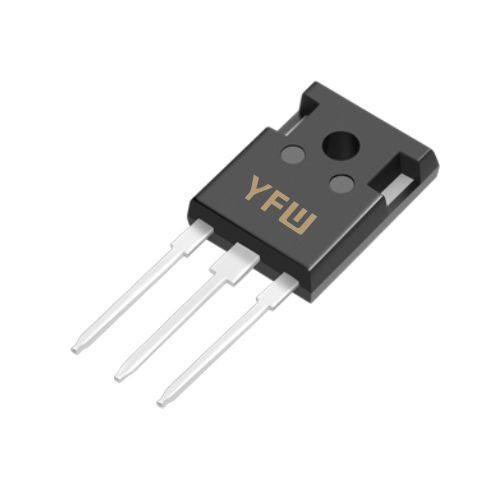A diode operates like a one-way valve for electric current. When its cathode is connected to the negative terminal of a power supply, the diode enters a reverse-biased state if the anode (positive terminal) is at a lower potential than the cathode . In this state, the depletion zone at the P-N junction widens, creating a high-resistance barrier that blocks current flow. This behavior is essential for reverse voltage protection, preventing damage caused by accidental polarity reversal in circuits. For example, in automotive electronics or battery-powered devices, a reverse-biased diode safeguards sensitive components from destructive backflow if the power source is incorrectly connected .
YFW’s TVS (Transient Voltage Suppressor) diodes, such as the SMAJ51A, are engineered for this purpose. These diodes remain in a high-impedance state under normal conditions but rapidly clamp excessive reverse voltages to safe levels during transients, ensuring robust circuit protection .
When a Zener diode is reverse-biased beyond its breakdown voltage, it enters a controlled conduction state, maintaining a nearly constant voltage across its terminals. By connecting the Zener diode’s cathode to the negative rail, the diode stabilizes the output voltage in voltage regulator circuits. This is particularly useful in scenarios where load variations or input voltage fluctuations could otherwise compromise system performance .
For instance, in a voltage regulator circuit, a Zener diode like YFW’s 1N4733A (5.1V) ensures that the voltage supplied to the load remains stable, even if the input voltage or load current changes. The diode’s ability to dissipate excess energy in reverse bias makes it ideal for maintaining precision in analog and digital systems .
YFW’s
CRD (Constant Current Diode) series takes reverse biasing a step further. These specialized diodes maintain a constant current output regardless of voltage variations, making them vital in applications like LED drivers and sensor circuits. When the CRD’s cathode is connected to the negative terminal, the diode operates in reverse bias, leveraging its unique doping structure to suppress current fluctuations caused by voltage spikes or load changes .
For example, in a 20W LED power supply, YFW’s SR540E (DO-27 封装) ensures stable current delivery, preventing LED burnout due to voltage surges while optimizing energy efficiency. This feature is particularly advantageous in compact designs where space and thermal management are critical .
Reverse-biased diodes also act as voltage clamps in signal conditioning. By connecting the cathode to the negative rail, the diode limits the negative excursion of an AC signal, protecting downstream components from overvoltage. This is common in audio amplifiers and communication systems, where signal integrity must be preserved without distortion .
YFW’s ultrafast recovery diodes, such as the US1MW (SOD123FL 封装), excel in high-frequency applications. Their low reverse recovery time (75 ns) minimizes switching losses, ensuring efficient signal processing in inverters and motor control circuits .
Voltage Ratings: Ensure the diode’s reverse breakdown voltage exceeds the maximum expected reverse voltage in the circuit to avoid premature failure.
Power Dissipation: Calculate the diode’s power handling capacity to prevent thermal runaway, especially in high-current applications.
Temperature Stability: YFW’s diodes are designed for operation up to 150°C (e.g., US1MW), ensuring reliability in extreme environments .
Connecting the negative terminal to a diode’s cathode is a versatile technique that unlocks functionalities like reverse current blocking, voltage regulation, and current stabilization. YFW’s comprehensive diode portfolio, including TVS, Zener, CRD, and ultrafast recovery diodes, provides tailored solutions for these applications. By combining advanced semiconductor materials with rigorous quality control (ISO 9001/14001 certified), YFW ensures its diodes deliver unmatched performance and reliability in diverse industries, from consumer electronics to industrial automation .
For detailed product specifications and application notes, visit
YFW Diode.
